When you sign up for a yoga class, you may expect to spend an hour folding and twisting your body in challenging stances to improve flexibility and physical fitness. You may be surprised to know this Western envisioning of yoga deviates from the original Eastern philosophies. There is much more to the practice.
“Yoga” is a Sanskrit word that means “union.” Maharshi Patanjali is the Indian sage and yogi credited with authoring the Yoga Sutras. Scholars and yogis refer to these writings as the foundation of yoga. Patanjali claimed, “Yoga is to still the patterning of consciousness.” He intended yoga to be a spiritual, meditative, and philosophical pathway to achieve peace.
Patanjali’s 8 limbs of yoga consist of yama (environment), niyama (self), asana (body), pranayama (breathing), pratyahara (senses), dharana (concentration), dhyana (meditation), and samadhi (oneness). Body postures are just one part of this ancient practice. Patanjali did not mention physical contortions in his sutras. As written, asana meant comfortable postures to stay still long enough to meditate.
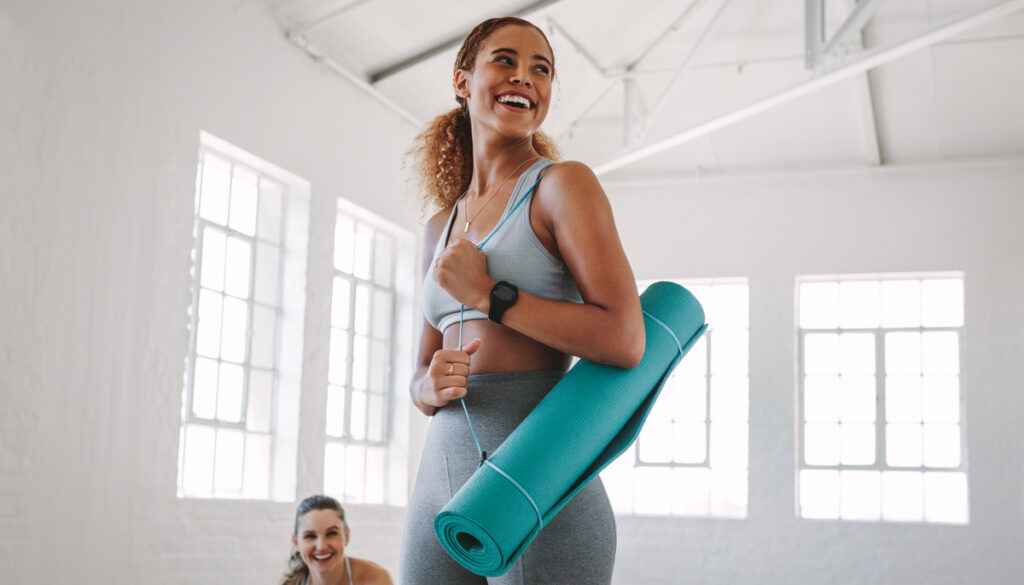
In the late 19th century, Indian yogi Vivekananda introduced yoga to the West, but not even he mentioned the yoga asanas we see today. The Western understanding of yoga later blended with Scandinavian body sculptings and Danish gymnastics during the global physical culture movement some 100 years ago. With this, Westerners focused more on physical fitness, and the meditative practice took a backseat.
If you have trouble bending and turning in what some recognize as modern yoga, never fret. This method is not required to practice as Patanjali intended. Here, we list comfortable yoga asanas for you to focus on mindfulness and meditation.
These poses provide minimal discomfort, allowing you to focus on your breath and build your physical knowledge and vocabulary. Calm your mind, relieve stress, develop discipline, and increase concentration in these yoga asanas. Hold each pose for at least three deep belly breaths.
Sukhasana (Easy Pose)
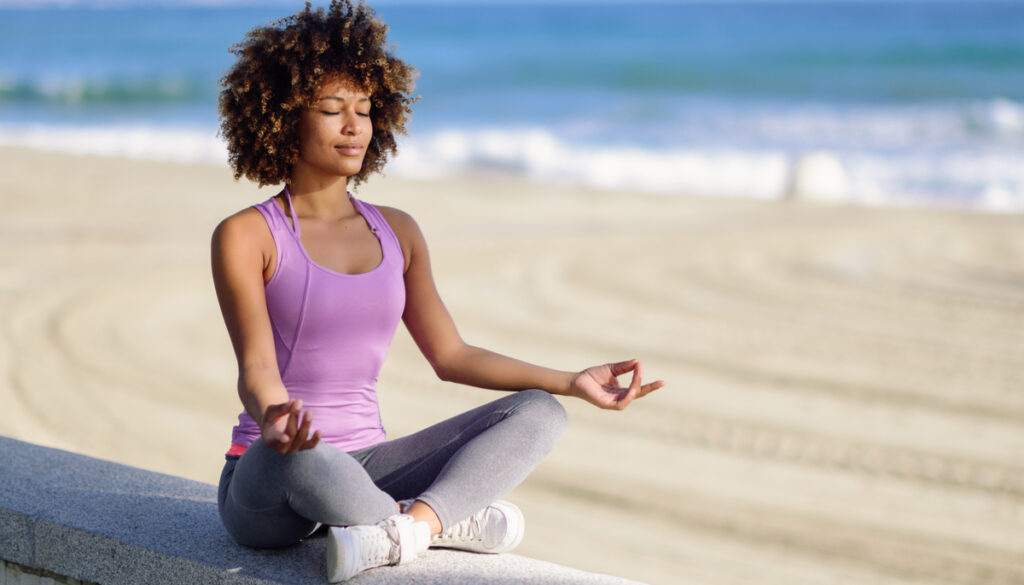
Cross your legs with your butt on the floor. You can hold your feet below your shins or tuck them toward the backs of your knees. Rest your arms on your knees with your hands facing upward. Connect your thumb and middle finger.
Virasana (Hero Pose)
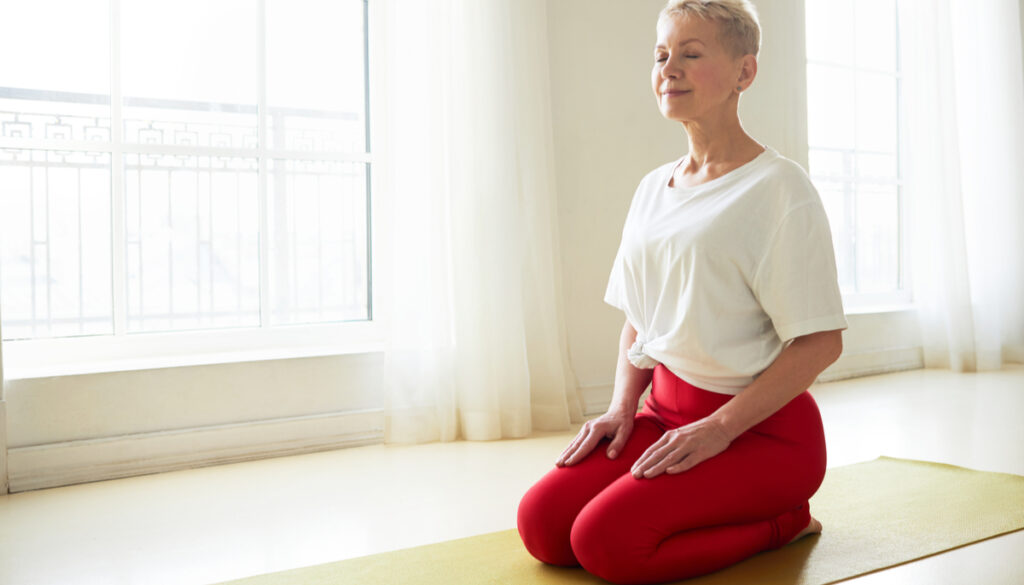
Put your knees together on the ground and sit on your feet. Keep your shoulders and spine erect. You may rest your hands on your legs, put them beside you on the floor, or position them together on your belly.
Paschimatanasana (Seated Forward Bend)

Sit on the ground with your legs straight in front of you. Bend at the waist to put your belly and chest to the thighs and reach to your feet. If this is uncomfortable, slightly bend your knees.
Shavasana (Corpse Pose)
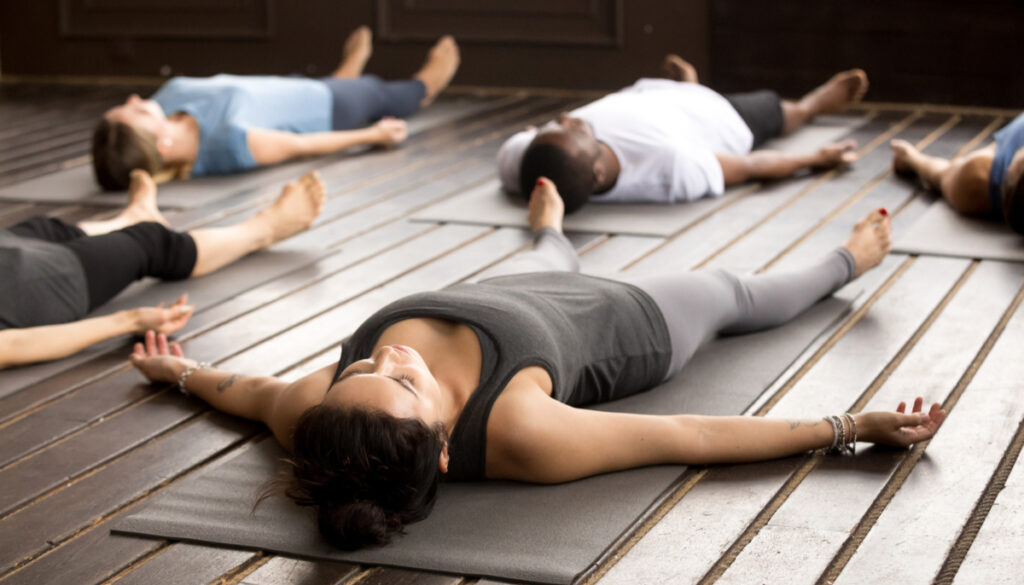
Lay on your back with your feet together or apart. Rest your hands on either side of you, facing up.
Bhadrasana (Butterfly Pose)
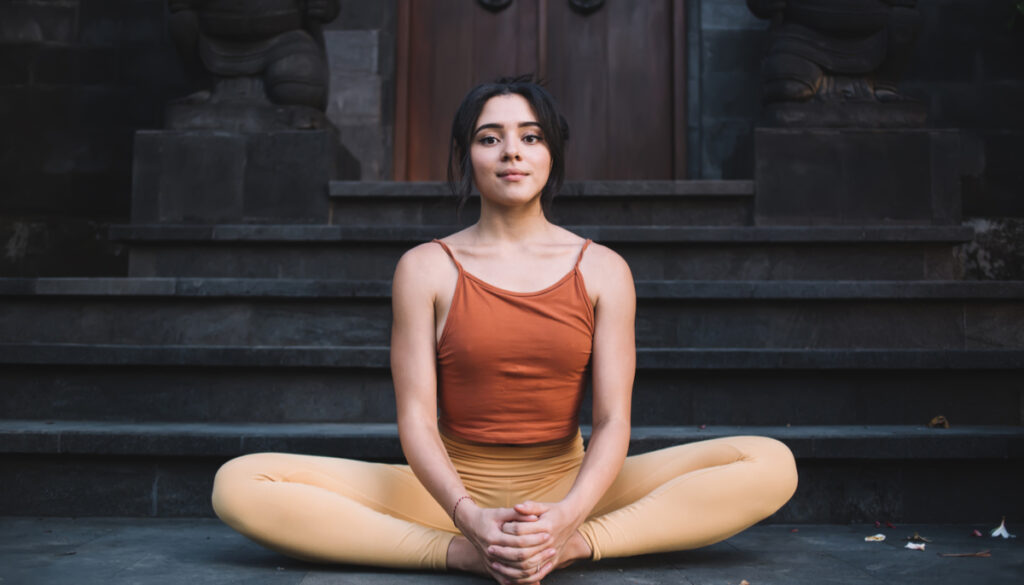
Sit on the ground with your knees bent toward the Earth below you and the bottoms of your feet touching. Rest your hands on your feet.
Balasana (Child’s Pose)
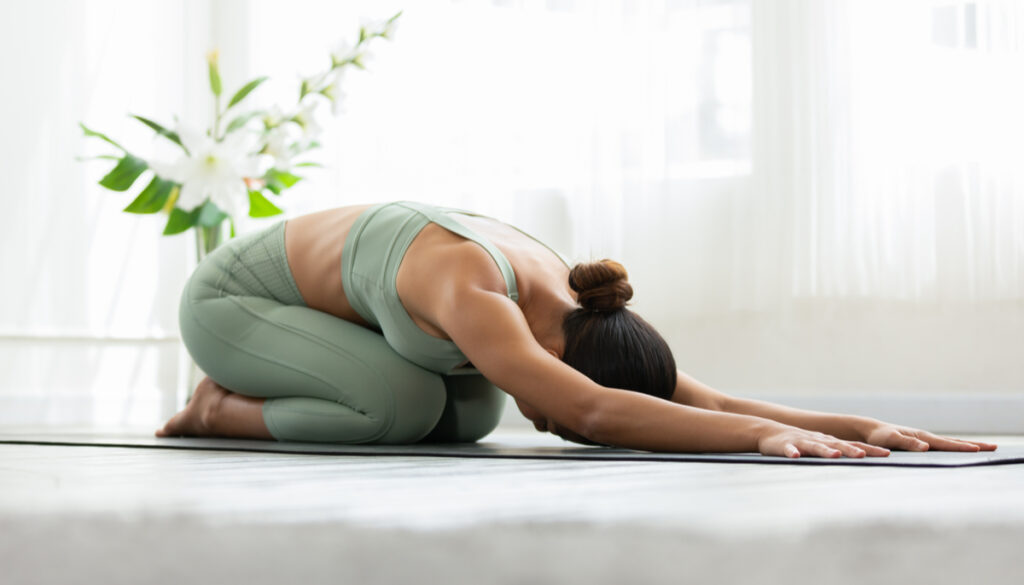
Start in a position similar to Hero’s Pose. Put your knees on the ground with your feet behind you. Sit on your feet. Bend your top half forward and stretch as far as you comfortably can with your hands on the ground.












